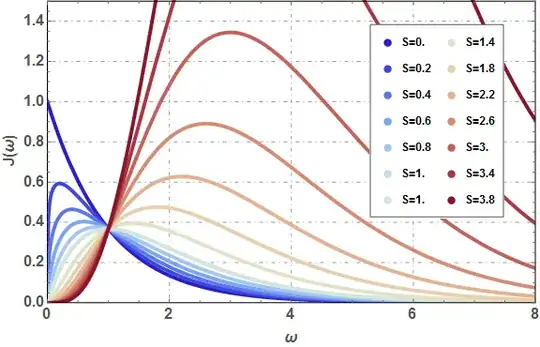I am witting a paper about the non-Markovian effects of open quantum systems (a qubit interacting with a bosonic environment). I am using a spectral density of the form below:
$$ J(\omega) = \frac{\omega^S}{\omega_C^{S-1}}e^{-\omega/\omega_C} $$
I want to know what is the physical interpretation of the $S$ quantity? I just know that $S=1$ means ohmic environment, $S>1$ super ohmic and $S<1$ subohmic, but I would like more interpretation.
and also what is the best amount for this quantity? for example in my work, I reached $S=20$? is this a logical result?
I would really appreciate if you could help me with your answer or send me useful links.
